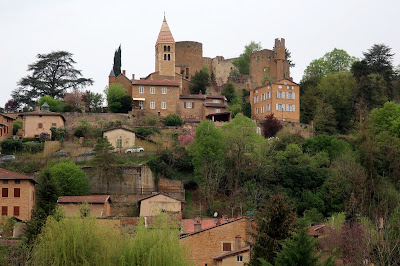Swanage and Corfe Castle
I rode a double decker bus from Poole to Swanage, eager to take a long, long walk along the seafront.
It was wonderful – fresh air, green fields, breaking waves, dogs on the beach and paragliders in the air.
At the northern end of the bay are Old Harry Rocks, limestone formations commemorating either the devil who had a nap on the rocks or a local pirate.
Swanage has been a popular seaside resort since Victorian times. If you go, be sure to visit Chococo for some handmade chocolates.
A short distance inland from Swanage is Corfe Castle. A small village of stone cottages and old pubs surrounds the remains of Corfe Castle. The castle is huge and appears even taller as it’s set on top of a large mound.
In 875AD, King Alfred, the Saxon king, defeated the Danes in a decisive naval battle in Swanage Bay, sinking 120 Viking ships. He built a wooden castle at Corfe to prevent any further attacks.
William the Conqueror replaced the wooden stronghold with a stone keep in the 1100s. It would have looked like a skyscraper to its early inhabitants. A later addition greatly enlarged the castle’s floor space.
The castle was mostly destroyed during the Civil War with villagers using the stones to build their own homes.
Ravens nest at Corfe Castle; local legend says the castle will crumble if the birds leave.
There are several old pubs in the village along with a National Trust tea room and shop. The Bankes Arms Hotel was built in the 16th century and was reputedly popular with smugglers.
The Greyhound Inn was built before 1580 and was one of Britain’s first coaching inns. The inn took its name from the King's Messengers who rode between Corfe Castle and the four other Royal Castles of England.



















Comments